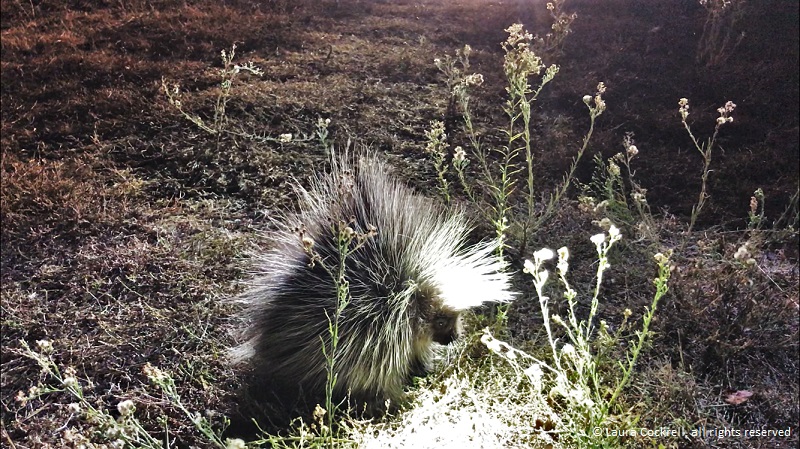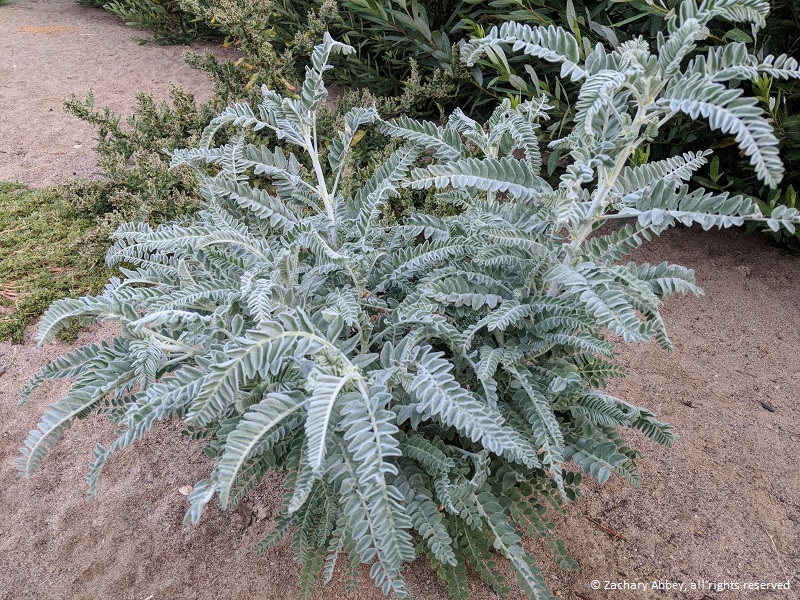
Erethizon dorsatum – North American porcupine
Submitted by Laura Cockrell, California Department of Fish and Wildlife
This special critter was observed sporting an eccentric hair style during a deer spotlighting survey in Glenn county. Porcupines are typically found in coniferous forests, creating dens out of roots, branches, rocks, or logs. They are nocturnal which is why spotlight surveys are a common detection method of this species. Their quills, which is their most distinguishable characteristic, can grow up to a foot long! They use these quills for self-defense by shaking and rattling them. If this noise isn’t effective, porcupines are known to charge backwards into predators. Ouch!
North American porcupines populations appear to be declining, possibly due to habitat loss, depredation, rodenticide, and low reproductive potential. Some perceive the porcupine as a nuisance to timber lands, but recent studies have found that their eating habits actually benefit ecosystem structure. Little is known about the distribution of this elusive species (they are known to rest up in trees – you may have to look up to find one!), so be sure to submit your sightings to us if you ever come across a porcupine! Currently, the database has 519 porcupine occurrences, mainly in northern California and throughout the Sierra Nevada mountains. Thank you, Laura, for snapping a shot of this unique species!

Astragalus brauntonii – Braunton's milk-vetch
Submitted by Zachary Abbey, Padre Associates, Inc.
This fuzzy perennial was found in riparian scrub in Ventura County. It is listed as a 1B.1 (rare or endangered in California and elsewhere, seriously endangered in California) in the California Rare Plant Ranking system. Astragalus brauntonii is endemic to California and occurs in chaparral, coastal scrub, and valley and foothill grasslands along the south west coastal region. When in bloom, during the months of January to August, it has spike-like inflorescences, each with 30 to 60 lilac colored flowers. Thank you, Zachary, for the hard work you do and the amazing photos you send our way!
Do you have some great photos of rare plants or wildlife detections? Submit them along with your findings through our Online Field Survey Form and see if your photos get showcased!